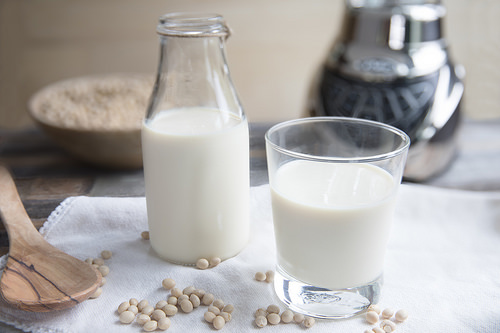Have you ever wondered by skim milk appears to be so watery? Well, the answer to that question is simple- when all the fat and cream of whole milk has been omitted, what you have left is a thinner version of the “real” thing. Though skim milk has a lower fat content, research shows that it may not be the most nutritious option available. However, it does still hold some benefits of its own, depending on your daily caloric needs. While the jury is still out on the merits of skim vs. whole milk, here are some facts about skim milk that you may have never known.
1. Skim Milk Isn’t Watered Down

Despite what many may think, skim milk isn’t actually watered down milk. Traditionally, skim milk would be made by allowing whole milk to sit out for a period of time, then eventually as all the cream and fat would rise to the top, what would be left is the less fatty version. This process was used to help combat obesity. Today, centrifugal irrigation is a more efficient process of separating milk, which is then homogenized so that it doesn’t separate any further.
Milk is actually regulated, meaning that water cannot be added, which not only helps maintain the integrity of the dairy, but water cannot be added to milk and still legally be called milk. Therefore, there is no vast difference between skim and full-fat milk. It’s just the milk without all the fat, which in turn, is used to create heavy cream.
2. Skim Milk Contains Substantial Nutrients

Skim milk has a negative reputation for being devoid of nutrients. This couldn’t be further from the truth. In fact, skim milk has almost as many nutrients as whole milk, without the fat content. Although vitamins A, D, E, and K are fortified within the fat of whole milk, vitamins A and D are added during the fat-removal process of skim milk. At least one 8-ounce cup of skim milk contains:
- .116 grams of fatty acids
- 13.01 grams of protein
- 127 calories
- 17.43 grams of sugar
- 175 milligrams of sodium
- 17.43 grams of carbohydrates
- 5 milligrams of cholesterol
To compare, a one 8-ounce cup of whole milk contains:
- 4.5112 grams of fatty acids
- 7.99 grams of protein
- 149 calories
- 12 grams of sugar
- 106 milligrams of sodium
- 12 grams of carbohydrates
- 25 milligrams of cholesterol
3. There Is More Than One Type of Skim Milk

Skim milk comes in a variety of different textures, just like its counterpart, whole milk. Because there are so many characteristics of each type to meet varying dietary needs, there is no shortage of ways one can incorporate a more heart-healthy version of dairy into the diet. Types, such as condensed skim milk enables the low-fat benefits with a thicker consistency through removing some of the water, while other kinds of milk, like organic skim milk, is processed without the use of growth hormones or antibiotics from cows that have only been organically fed.
4. Skim Isn’t The Same As 1%

Skim milk is the same thing as fat-free and while the two terms are seemingly different, skim milk can only contain up to .2% milk fat, which practically makes it fat-free. 1% milk, on the other hand, contains just 1% milk fat and is considered low-fat, but both contain minuscule amounts of fat, which leads to the misconception that they are the same due to their light texture. However, when it comes down to getting the nutrients that you need, both kinds of milks contain the 9 essential nutrients necessary to stay fit and healthy.
Both kinds of milk go through a pasteurization process to keep bad bacteria from feeding and keeps consumers safe. There are also a variety of the types of milk that you may purchase, such as organic, with typically comes with a *rBST-free *label, to ensure that synthetic hormones aren’t added. Other than the process and whether or not a milk is organic, most skim and 1% kinds of milk are more similar than different.
5. Skim Milk Has Its Disadvantages

With all the similarities that milk has in common with other dairies, it also has its downsides. For one, since vitamins are added to skim milk during the fortification process, synthetic versions of vitamins A and D do not always readily absorbed, so your body isn’t digesting as many nutrients as it does with whole milk. Secondly, since some people opt for skim milk as a means to stay fit, due to the lack of fat content, skim milk doesn’t necessarily fill you up between meals since it doesn’t have the fat contents to keep you satisfied. However, there are lots of options when it comes to adding more nutrients to your dairy drink, such as smoothies and juices.
It’s important to keep in mind your unique dietary needs and what will work best for your overall health, rather than follow diet trends. Skim milk is a viable way to gain nutrients without the heavy creams and fats that whole milk contains!
